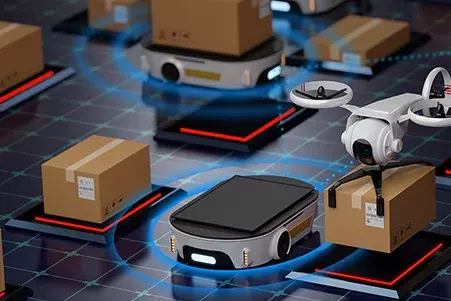So That the Robot Also Works in Dead Zones
When mobile robots suddenly get stuck in a dead zone, it's a case for Meshmerize from Dresden: their communication networks enable industrial robots, parcel delivery drones and autonomous cars to connect directly and fail-safe - without any base stations or other infrastructure.

The steel and plastic colleagues communicate via these point-to-point connections, even in places where neither 5G radio nor Wi-Fi is available. The company trims these ad hoc networks for short latency times so that the robots can continue working without any noticeable delays.
At the heart of this is a software package that can be installed on any robot and any Wi-Fi-capable device with Linux and suitable wireless technology. This system searches for neighboring WLAN connections, which individually may only function moderately, and links them in such a way that they function externally as a uniform, reliable network. As there are always several paths from one node to the next, just like the wires of a mesh fence, the data packets can always find new viable routes. This turns every rolling robot into a base station on wheels, every drone into a flying access point. And this also means that such a mobile network can expand and shrink again with its "agents", flexibly fill in radio shadows and reinforce existing 5G, WiFi or LAN networks. Typical application scenarios for the mesh networks include agricultural drones for crop monitoring, construction sites, transport robots in highly automated warehouses, but also factories that are retrofitted for "Industry 4.0".
The young company was founded in 2020 as a spin-off from TU Dresden. Meshmerize is also in demand as a technology partner for the development of 6th generation mobile communications.
Meshmerize GmbH, Dresden